Gold Beach in Bolt Action
A scenario for refighting the Gold Beach landings can be found in the supplement, Battleground Europe (pages 54-55). However, with the subsequent release of Campaign D-Day: Overlord the recommended theatre selectors have been updated. The scenario is thus reproduced here with such changes implemented.
Opposing Forces
This scenario is played between an attacking British force and a defending German force.
British platoons should be taken from the British/Canadian Beach Assault Reinforced Platoon Selector in the D-Day Overlord book. It is strongly recommended that no vehicles other than Sherman tanks, DD Sherman tanks, and Hobart’s Funnies (Churchill AVREs) should be chosen. The entire force must start the game mounted in landing craft, but all landing craft are free. The rules for these specialized units can be found in D-Day Overlord.
German platoons should be taken from the 1944 – Atlantic Wall resistance nest selector in the Armies of Germany book. You may also opt to use the Static Division’s Resistance Nest Reinforced Platoon selector (D-Day Overlord – Page 168) should you prefer. Also, they get a free minefield section for each landing craft used by the attackers.
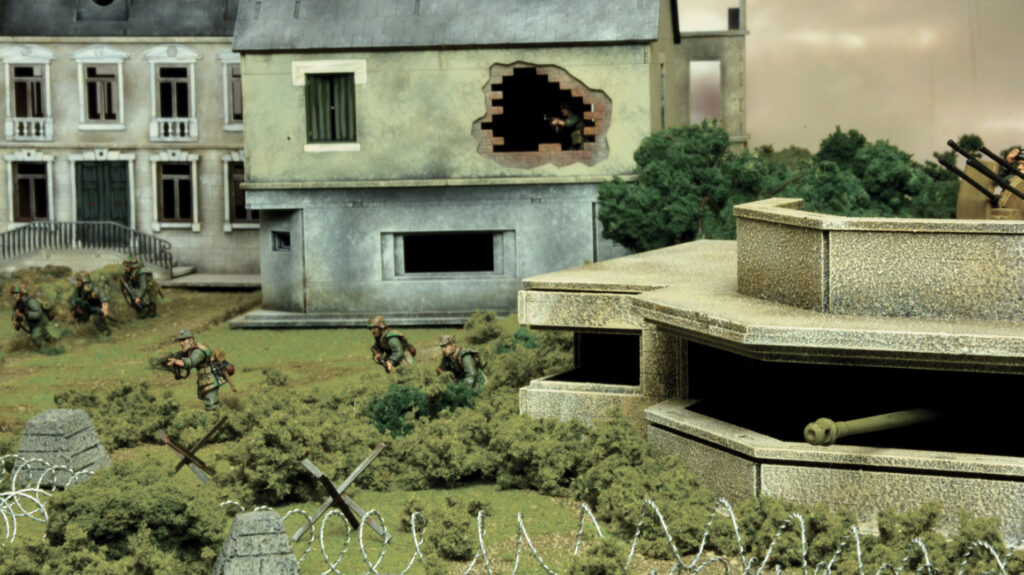
Set Up
From the attacker’s point of view, the first 12” of the table from the defender’s edge consists of deep water, the next 12” is shallow water, then 12” of beach (rough ground) and the last 12” is where the Germans deploy their units and their fortifications
The German player places half of their forces (rounding up, they can start the game hidden), together with a good number of obstacles like barbed wire, low walls, sandbag emplacements, tank traps and ditches, and up to three bunkers, within 12” of their table edge – this is their deployment area. Then they place their mines and a good number of obstacles that are impassable to vehicles anywhere on the beach and/or water areas. Any units not deployed are held back in reserve. The British player places no units at the start of the game. Instead they must nominate at least half their force as their first wave. Any units not included in the first wave are held back in reserve.
Special Rules
AMPHIBIOUS ASSAULT
This scenario uses the Amphibious Assault rules.
MINEFIELDS
The German force receives free minefield sections, as per the Minefield rules.
PREPARATORY BOMBARDMENT
Both the Germans and the British had access to a staggering amount of firepower. The Germans had several guns mounted inland, as well as those on the beach, while the Allies had a massive fleet of naval artillery.
The attackers automatically get a preparatory bombardment.
In addition, each player gets one extra free special artillery observer team (this is on top of the one offered by the British army special rules!). This team consists of an artillery observer and a second man who accompanies him, both armed with pistols. The turn after their artillery barrage is resolved, these special artillery observers can call in another barrage, and continue to do so as long as they are alive.
Objective
The British player must try to move as many of their units as he can into the defender’s set-up zone and destroy the defending forces to establish a beachhead. The German player must try and stop them. Note that in this scenario, British units are allowed to deliberately move off the table from the German player’s table edge to reach their objective.
First Turn
The battle begins. During turn 1, the British player must bring their entire first wave on to the table. These units can enter from any point on the British table edge. Note that no order test is required to move units onto the table as part of the first wave.
Game Duration
Keep a count of how many turns have elapsed as the game is played. At the end of turn 9, roll a die. On a result of 1, 2, or 3, the game ends; on a roll of 4, 5, or 6, play one further turn.
Victory!
At the end of the game, calculate which side has won by adding up victory points as follows. If one side scores at least 2 more victory points than the other then that side has won a clear victory. Otherwise, the result is deemed too close to call and the result is a draw
The British player scores 1 victory point for every enemy unit destroyed. They also scores 1 victory point for each of their own units that ends the game in the enemy deployment area, and 2 victory points for each of their own units that has moved off the enemy table edge before the end of the game.
The German player scores 1 victory point for every enemy unit destroyed.
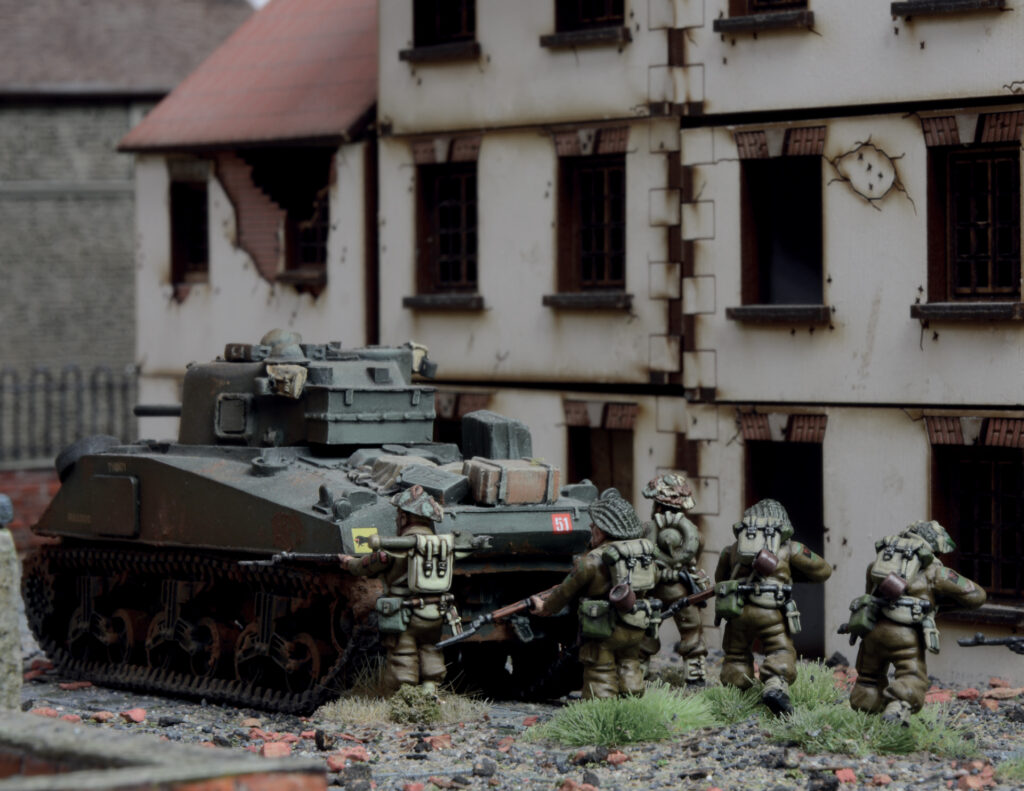
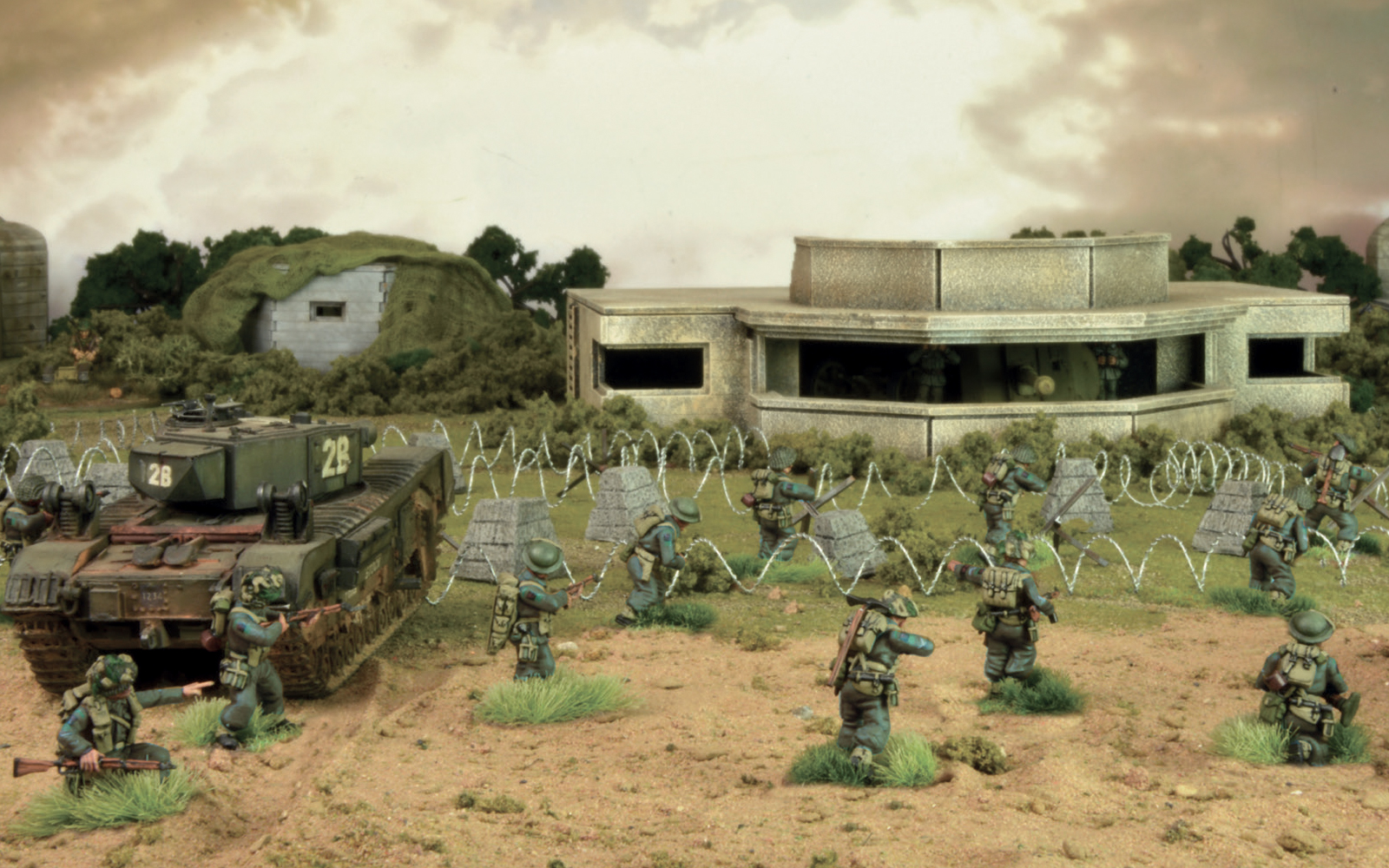
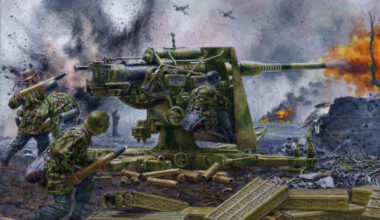
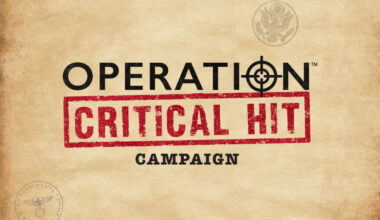
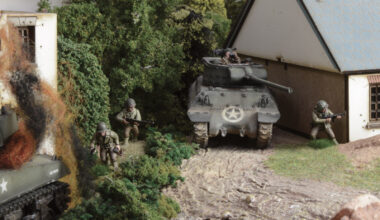
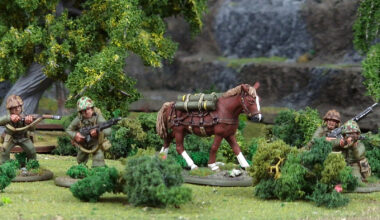
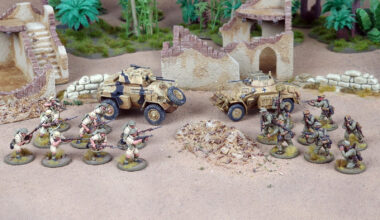
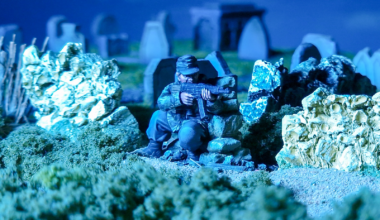
2 comments
Well. If he isnt my gaming twin i dont know who is! I have umpteen unpainted minis… And im lucky to roll above a 2 most of the time! Glad to see I’m not alone!
My grandfather served LCA 524 Flotilla, who landed the first wave of the Hampshire Regiment on Gold Beach on June 6th 1944. Although he didn’t talk a great deal about the war, I remember as a 6-year-old asking if the Germans shot at him as they landed. He laughed and said they shot everything at them as they came in. I had no idea quite how bad it was on that day and was told years later by my grandmother about the nightmares he had from what he saw. If you visit Gold Beach walk away east up the beach from Le Hamel and you’ll come across the remains of one of small pillboxes that was destroyed during the assault, and was likely shooting at my grandfather as he came in to land.
Comments are closed.